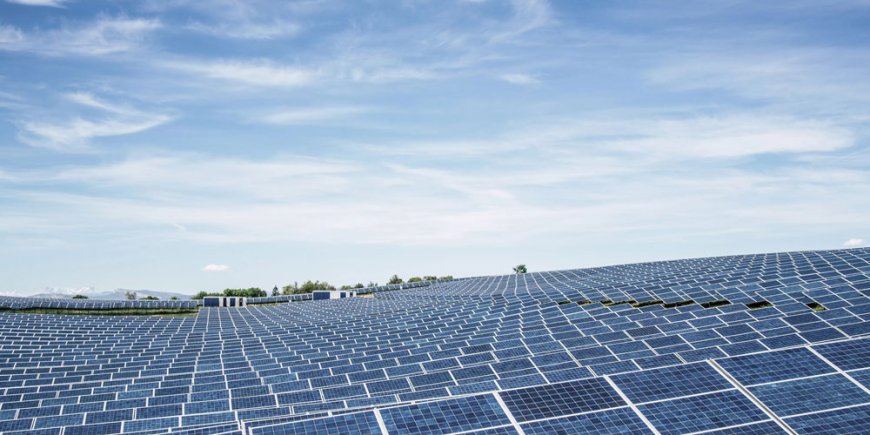The role of TECHNOLOGY in India's RE construction industry

Increasing deployment of solar power at a rate of 19-20 GW per year has led the industry to explore the role of technology and automation in ensuring efficient project delivery.
India's renewable energy industry is experiencing rapid growth, aiming to reach a capacity of 500 GW by 2030, a significant increase from the current level of around 170 GW. Solar power accounts for over 50% of this capacity expansion, with wind power and smaller contributions from biomass and small hydro projects. The increasing deployment of solar power at a rate of 19 to 20 GW per year, which is expected to rise further, has led the industry to explore the role of technology and automation in ensuring efficient project delivery.
One of the primary requirements for the renewable power-related construction industry is land acquisition for project implementation, along with the procurement of equipment and a skilled workforce. As the demand for these key resources continues to grow, the need to leverage technology to optimise land and manpower usage becomes increasingly important. Several technologies are aiding in achieving these objectives:
Utilisation of drones: Drones are extensively employed in the renewable power construction industry for applications such as topographic surveys, project progress monitoring, construction quality and safety monitoring, and asset health assessments, including thermography studies. The deployment of drones provides accurate real-time results within shorter timeframes compared to manual processes. For example, conducting a topographical survey of land intended for a solar power plant using a total station manually could take weeks to complete, whereas using a drone could complete the survey in just a few days.
Modular construction technologies: Such as prefab rooms and precast concrete works, are extensively utilised in the industry to reduce reliance on labour at remote sites and improve quality control. For example, in solar power plants, prefabricated materials are being used for the solar inverter control rooms and precast materials for the boundary wall of the plant. Prefab room components for example, are manufactured in a controlled environment, hence leading to better quality and time control.
BIM and AR/VR: Building Information Modeling (BIM) is widely employed in the construction industry for preconstruction project visualisation, leading to enhanced coordination between stakeholders, clash detection, accurate quantity collection, improved scheduling, precise model-based cost estimation, and better project execution. BIM models have evolved to incorporate multiple dimensions, progressing from 2D to 8D. Beginning with the basic 2D model delineating only x and y coordinates, the evolution includes 3D, incorporating the z-axis, 4D adding the element of time, 5D integrating cost considerations, 6D supporting as-built drawings, 7D facilitating asset management, and finally, 8D including health and safety considerations. The integration of augmented reality and virtual reality further enriches the stakeholder experience, yielding additional benefits. AR/VR technology is extensively utilised for safety training of workers, such as simulating virtual scenarios of falls from heights and demonstrating preventive measures.
Mechanisation of design and construction - Automation of design involves the development of software capable of performing full design of renewable power plants and generating drawings/BOQ based on input data. Similarly, the use of robotic arms for automating construction activities on-site, such as solar module installations, is also being explored, particularly for large-scale projects. These automations help in reducing the execution time substantially and also reducing the dependence on scarce skilled manpower.
Tailoring solar power plant: Designs to match the land's shape and contour is pivotal in the construction process. Given the significant variation in land shapes from one project to another, as well as the challenge of securing evenly shaped and contiguous land, the industry has innovated various design solutions to address these complexities. For instance, in southern India, the implementation of an east-west configuration for solar modules has proven effective in reducing land usage while maintaining comparable generation capabilities to a standard south-facing module configuration. Another innovative approach involves the use of contour-following solar module structures, which leverage the natural profile of the ground without necessitating extensive cutting and filling. These design innovations not only minimise land requirements but also mitigate potential cost increases and environmental impact that would arise from extensive land excavation. The incorporation of higher wattage solar modules, bifacial solar modules, and technologies such as solar tracker serves to enhance power generation within a given land area, consequently leading to a more favourable levelised cost of electricity.
IoT, AI, and machine learning: Encompass the collection of data from construction sites using sensors and analysing them to study trends and make predictions. For example, tracking diesel consumption of DG units and predicting pilferage in a construction site. This information allows managers to detect anomalies or discrepancies in fuel usage immediately. Sudden drops in fuel levels or unusual consumption patterns can signal potential fuel theft. Similarly, monitoring plant operations, such as measuring the temperature of solar modules and other key equipment like inverters, are a few examples. By employing AI and machine learning algorithms on the
collected data, the system provides alerts and predictive analytics, allowing the team to take proactive measures and implement necessary corrections. AI is also utilised to develop forecasting models that use weather data to make long-term and short-term generation predictions.
Use of alternative materials: There is significant capex and opex cost reduction of solar power plants over the past decade, rendering them a competitive and viable electricity source. This cost reduction has been propelled by value engineering, mass production economies, and the adoption of alternative materials. For instance, the mounting structures for solar modules, which previously required approximately 100 metric tons per megawatt (MW) mainly used hot-rolled steel sections, which have been reduced to almost 20 metric tons per MW through value engineering and use of alternative materials such as cold-formed steel and galvalume.
The above points are few of the examples of how technology is helping the renewable construction industry. However, there are challenges with respect to the need for upskilling the workforce to adapt to technological advancements, cost implications of integrating new technologies, and ensuring cybersecurity in an increasingly digitised environment. Investments in workforce training, research and development, and collaborative efforts between technology providers and construction firms can address these challenges.
The construction industry's role in renewable energy deployment in India is pivotal, and the integration of technology has reshaped construction methodologies, enhancing efficiency and sustainability. Embracing digitalization, investing in innovation, and upskilling the workforce will be paramount in ensuring the industry's continued success in meeting the nation's renewable energy targets. As India accelerates its transition towards a greener energy landscape, the renewable power-related construction industry will continue to play a crucial role, powered by technological advancements and a commitment to sustainability.

Harshitha S Kumar, COO, Radiance Renewables







